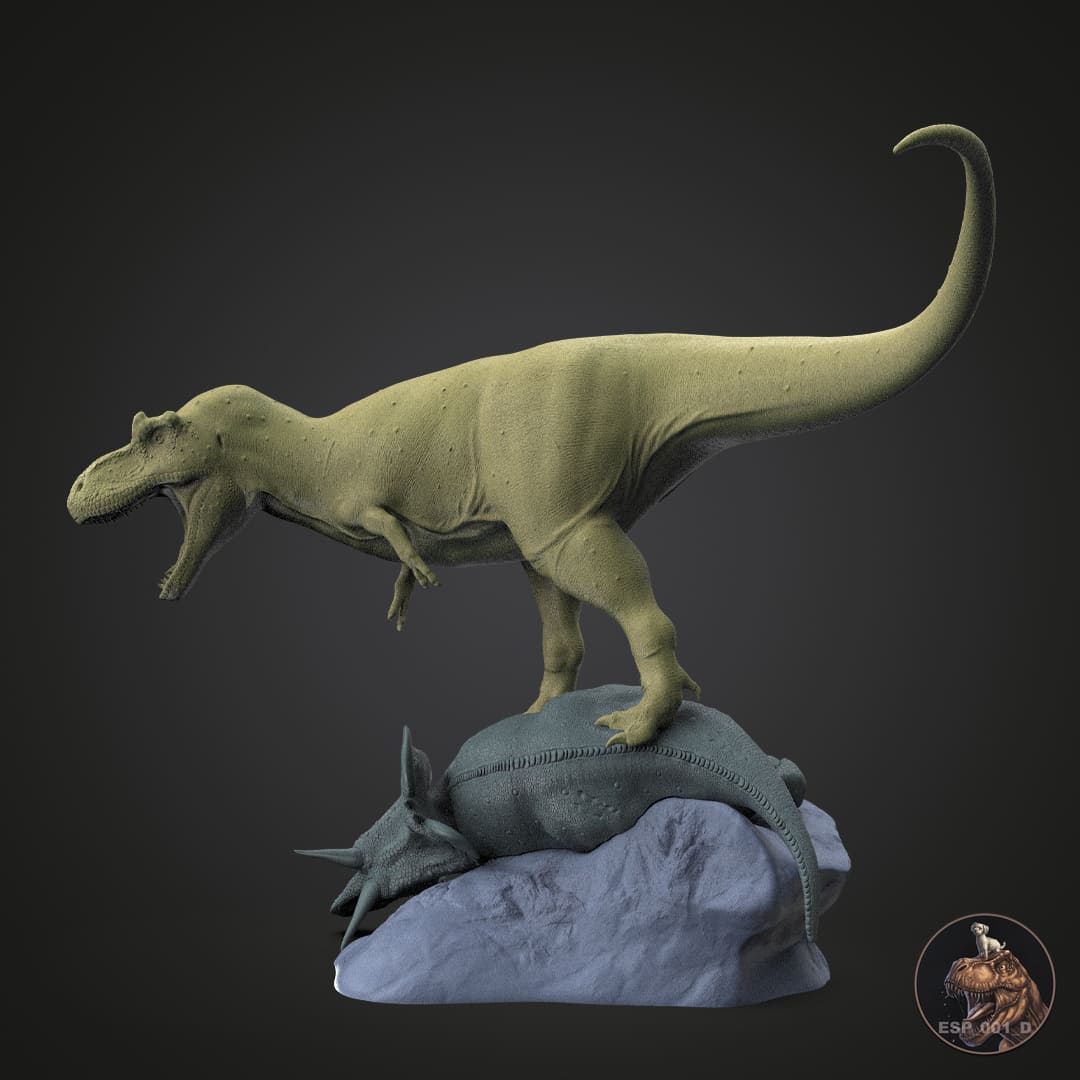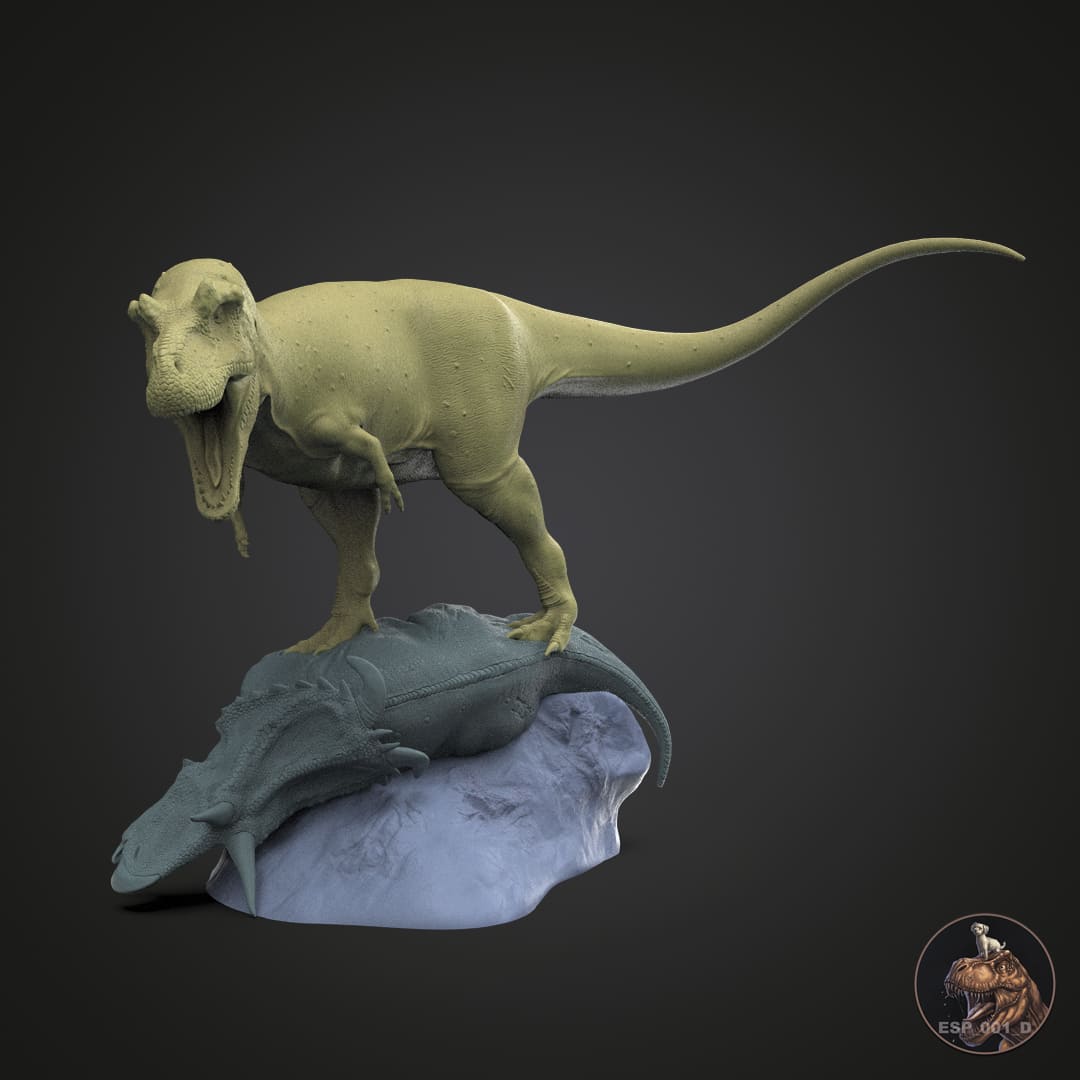



Daspletosaurus torosus
Do you want another scale?
Contact us and we will make it possible!
How will you receive your replica?
In the unprimed and primed variants, you will receive the complete replicas except for the large models, where you will receive an assembly kit.
In the hand-painted variant, the replicas will be delivered complete.
How does the painting service work?
We created a private chat for you where you will have direct communication with our painter , being able to choose your preferred color schemes and follow the hand painting process closely.
Pairs well with

Daspletosaurus torosus
If you have any questions, you are always welcome to contact us. We'll get back to you as soon as possible, within 24 hours on weekdays.
Shipping Information
Visit our shipping policy page to find all the information.
Customer Support
Give us a few details and we’ll offer the best solution. Connect by chat or email.
We are available 24/7.
FAQ’s
Visit our FAQ's page to find answers to common questions.
Contact Us
We'd love to hear from you. We are here to help. Visit our contact page to send us a message.
Product details
With an estimated length of between 8 and 9 meters and a weight ranging from 2.5 to 4 tons, Daspletosaurus torosus was an apex predator in its ecosystem. Its skull, which could reach one meter in length, was armed with robust and sharp teeth, designed to crush bones and tear flesh. Recent studies have revealed that its bite was extremely powerful, comparable to that of other tyrannosaurids, allowing it to feed on large prey, such as ceratopsians and hadrosaurs.
One of the distinctive features of this dinosaur is its skull, which displays a complex system of sinuses and internal chambers. These structures probably helped reduce the weight of the skull while maintaining its strength, as well as being involved in thermoregulation or even sound amplification. Its snout featured rough ornamentation, which could have been used in visual displays or social interactions, such as courtship or intraspecific competition.
Its hind limbs were strong and muscular, designed to support its great weight and to move at moderate but sustained speeds. Although it was not as fast as other smaller theropods, its combination of strength and strategy probably made it a formidable hunter. In contrast, its forelimbs were small, with two functional fingers, typical features of tyrannosaurids. These limbs, although reduced, had powerful muscle attachments, suggesting that they could still fulfill specific functions, such as holding prey during hunting.
The fossil record of Daspletosaurus torosus comes primarily from Alberta, Canada, especially from the Oldman Formation. This region during the Late Cretaceous was a humid and richly diverse ecosystem, composed of forests, rivers, and floodplains. This dinosaur is thought to have shared its habitat with other large predators, indicating a possible ecological partitioning based on differences in diet, behavior, or hunting strategies.
In addition, recent studies have begun to suggest that, like other tyrannosaurids, Daspletosaurus torosus might have been a social animal to some extent. Fossil remains showing multiple individuals in a single location have led to the hypothesis that these animals perhaps hunted in groups or gathered under certain circumstances, such as around a large food source.
Finally, analysis of bone insertions and comparisons with close relatives indicate that this dinosaur probably possessed a partial covering of feather-like tissues, particularly in juvenile regions. This would be in line with the hypothesis that feathers in tyrannosaurids had a thermoregulatory or even visual communication function during the younger stages of their development.
Daspletosaurus torosus, with its mix of primitive and advanced features, represents a key stage in the evolution of tyrannosaurids, standing out as one of the most impressive and adapted predators of its time.
Approximate measurements of Daspletosaurus:
- 1:35 scale Assembly kit
- Length 162 mm
- Height 85 mm
- Width 84 mm
- Snout-tail length 245 mm
Information about aftershocks
Collector's item ; Hyper-realistic replica, highly detailed and with a high degree of scientific precision.
Made to scale, prototyped in resin and with a scenic base in most of the models offered. If you like miniatures, both for collecting and for painting, we offer you a wide variety of scale replicas; All of them related to dinosaurs, extinct prehistoric fauna and current fauna.
So if you love dinosaurs and animals as much as we do, this is your favorite store to collect and paint them :)
We are authorized distributors of all the replicas and figures we offer. We use 3D printers with 8K - 14K resolution, and high-quality resins with additives to improve hardness and flexibility, thus offering replicas of impeccable quality.
Different scales will be used to make the replicas (depending on the size of the species), although we are open to making other suggested scales upon request as long as they fit in our printing trays, for which you will have to contact us via email and request the required size.
Replicas are supplied with the option of airbrush priming in dark grey. If you require another colour, please let us know which one you prefer in the box with special instructions for the seller. Without priming, we do not guarantee that the resin will accept paint.
We also offer the option of choosing a professionally painted replica, which is agreed upon throughout its development with the painter, through a private chat available.
Complete replica (one piece): We supply complete replicas in those models that are small, and models that are medium, large or not very bulky, will have the prerogative of being presented as a complete replica or assembly kit as the case may be.
Complete replicas will be supplied separately from their base.
Replica assembly kit: We supply replicas whose models are large, very large or bulky, only with this option.
The indicated replicas (generally composed of base, head, body and tail) will come prepared for the subsequent assembly that will be required by the client, by sanding, putty, adhesive or technique chosen by the client.
All replicas are thoroughly inspected before shipping and will be carefully packaged to prevent damage during transport.
Information about the models
The poses of the models aim to represent each character in the most scientifically viable way, thus revealing the life and customs of prehistoric and modern fauna.
Each character has its own personality and develops in different life scenarios; birth, adolescence and play, hunting, feeding, fighting, courtship, death and many other scenes from their daily life, always from the creative perspective of their designers.
Handmade
All orders are individually prepared on the cutter for subsequent prototyping, obtaining a resin part that will require post-processing by manual and ultrasonic cleaning, support removal, ultraviolet curing, labeling and packaging.

We are authorized distributors
We offer both our own physical replicas and those that have been modeled by many of the best 3D designers, in order to offer you the greatest possible variety.
Frequently Asked Questions
If you have any questions about products, orders or shipping, please read our FAQ page to learn more.
